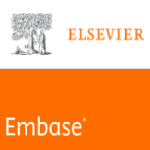Combined Effect of Tamarindus indica and Emblica officinalis on enzyme profile and lipid profile after fluoride intoxication in albino rats
DOI:
https://doi.org/10.18311/jeoh/2010/18278Keywords:
Enzyme profile. Lipid profile, Albino rat. Fluoride water, Tamarindus indica and Emblica officinalisAbstract
The present investigation was carried out to evaluate the combined effect of Tamarindus indica and Emblica officinalis on serum enzyme profile and lipid profile after fluoride intoxication in albino rats. Both these medicinal plants have been used as a valuable ingredient of various medicines in India. Three groups of ten adult male albino rats were administered 14.29 mg/L fluoride drinking water (collected from the fluoride zone in Agra region) for 30, 45 and 60 days and another three groups of ten rats were treated first with fluoride water in the same way as mentioned above and then treated with combined T indica (1 Ogm/Kg body weight) and E. officinalis (500 mg/Kg body weight) fruit extract (mixed in ratio of 1:2) orally for 15, 30 and 45 days, respectively. Results showed a very highly significant (p<0.001) increase in serum AST, highly significant (p<0.01) in ALT and non-significant (p>0.05) increase in LDH after fluoride water intoxication; while a very highly significant (p<0.001) decrease in serum AST, highly significant (p<0.01) decrease in ALT and nonsignificant (p>0.05) decrease in LDH after combined T indica and E. officinalis treatment, respectively There were observed highly significant (p<0.01) increase in serum total cholesterol, LDL, VLDL, very highly significant (p<0.001) increase in TG and a very highly significant (p<0.001) decrease in HDL after fluoride intoxication; whiles very highly significant (p<0.001) decrease in serum total cholesterol, LDL, VLDL, TG and a very highly significant (p<0.001) increase in HDL after combined T indica and E. officinalis treatment, respectively. T indica reduces the serum fluoride concentration through chelation bio-mechanism and provides nutrients; while E. officinalis acts as a strong antioxidant We concluded that T indica and E. officinalis have compensated the fluoride toxicity that affects the body metabolism.Downloads
Metrics
Downloads
Published
How to Cite
Issue
Section
Accepted 2017-11-29
Published 2017-11-30
References
Ahmad, S., Hiyasat.A., Elbetieha.A M. and Darmani, H. (2000) Reproductive toxic effect of ingestion of sodium fluoride in female rats. Fluoride, 33, 279-284.
Anila, L. and Vijayalakshmi, N.R. (2002) Flavonoids from Emblica officinalis and IVIangifera indica - effectiveness for dyslipidemia. J. Etfinoptiarmacol., 79, 81-87.
Antony, B., Merina, B., Sheeba, V. and Mukl
Bhattacharjee, R. and Sil, PC. (2007) Protein isolate from the herb, Phyllanthus niruri, modulates carbon tetrachlorideinduced cytotoxicity in hepatocytes. Toxicol. Mech.Methods, 17, 41-47.
Bhattacharya, S.K., Bhattacharya, A., Sairam, K. and Ghosal, 8. (2002) Effect of bioactive tannoid principles of Emblica officinalis on ischemia-reperfusion-induced oxidative stress in rat heart. Phytomedicine, 9,171-174.
Chatterjee, M., Sarkar, K. and Sil, PC (2006) Herbal {Phyllanthus niruri) protein isolate protects liver from nimesulide induced oxidative stress. Pathophysiol., 13, 95-102.
Choubsia, S.L. (2001) Endemic fluorosis in southern Rajasthan, India. Fluoride, 34, 6 1 - 70.
Cicek, E., Aydin, G., Akdogan, M. and Okutan, H. (2005) Effects of chronic ingestion of sodium fluoride on myocardium in a second generation of rats. Hum. Exp. Toxicol., 24, 79- 87.
Cobben, M.A.M. (1997) Serum lactate dehydrogenase and its isoenzyme pattern in ex-coal miners. Res. Med., 91, 616623.
Ferrara, L. (2005) Antoxidant activity of Tamarindus indica L. Ingredienti Alimentary, 4, 13- 15.
Friedwald, W.T., Lovy, R.I. and Friedericksn, D.S. (1972) Estimation of the concentration of ON density lipoprotein cholesterol in plasma without use of the preparative ultra centrifuge. Clin.Chem., 18, 499-511.
Guo, X.Y., Sun, G.F. and Sun, Y.C. (2003) Oxidative stress from fluoride induced hepatotoxicity in rats. Fluoride, 36, 25-29.
Harwood, J. E. (1969) The use of an ion - selective electrode for routine analysis of water samples. Water Res., 3, 273-278.
Iftekhar, A.S., Rayhan, I., Quadur, M.A., Akhteruzzaman, S.F and Hasnat, A. (2006) Effect of Tamarindus indica fruits on blood pressure and lipid-profile in human model: An in vivo approach. J. Pharm. Sci., 19, 125 - 129.
Ishola, M.M., Agbaji, E.B. and Agbaji, A.S. (1990) A chemical study of Tamarindus indica (Tsamiya) fruits grown in Nigeria. J. Sci. Food Agricul., 51,141-143.
Khandare, A.L., Rao G.S. and Lakshmaiah, N. (2002) Effect of tamarind ingestion on fluoride excretion in humans. Eur. J. Clin. Nutr., 56, 82-85.
Khandare, A. L., Kumar, P.U. and Lakshmaiah, N. (2000) Beneficial effect of tamarind ingestion on fluoride toxicity in dogs. Fluoride, 33, 33 - 38.
Khandare, A.L., Kumar, P.U., Shankar, R.G., Venkaiah, K. and Lakshmaiah, N. (2004) Additional beneficial effect of tamarind ingestion over defluoridated water supply to adolescent boys in a fluorotic area. Nutrition, 20, 433436.
Lee, S.J., Oh, RS., Ko, J.H., Lim, K. and Lim, K.T. (2006) Protective effect of glycoprotein isolated from Ulmus davidiana nakai on carbon tetrachloride- indused mouse liver injury. J.Pharm. Pharmacol.. 58, 143-152.
Librandi, LAP, Chrysostomo, T.N., Azzolini, A,E., Recchia, C.G., Uyemura, S.A. and Pandochi, A.I. De A. (2007) Effect of tamarind fruit on the complement system: Study in vitro and in hamsters submitted to a cholesterol-enriched diet. Food Chem. Toxicol., 27, 121-129.
Manna, P, Sinha, M. and Sil, PC. (2006) Aqueous extract of Terminalia arjuna prevents carbon tetrachloride induced hepatic and renal disorders. BMC Compl. Altera. Med.. 6, 33-38.
Manna, P., Sinha, M. and Sil, PC (2007)A43 kD protein isolated from the herb Cajanus indicus L attenuates sodium fluoride - induced hepatic and renal disorders in vivo. J.Biochem. Mol. Biol., 40 , 382 - 395.
Martinello, F., Scares, S.M., Franco, J.J., Santos,AC, Sugohara, A., Garcia, S.B., Curti, C. and Uyemura, S.A. (2006) Hypolipidemic and antioxidant activities from Tamarindus indica L., pulp fruit extract in hypercholesterolemic hamesters. Food Chem. Toxicol., 44, 810- 818.
Maruthamuthu, M. and Reddy, J.V. (1987) Binding of fluoride with tamarind gel. Fluoride, 20, 109-112.
Mathur, R., Sharma, A., Dixit, V.R and Varma, M. (1996) Hypolipidaemic effect of fruit juice of Emblica officinalis in cholesterol-fed rabbits. J. Ethnopharmacol., 50, 61-68.
McGowan, L. (1983) Estimation of triglyceride in serum Clin.Chem., 29, 538-539.
Neurath, 0. (2005) Tooth decay trends for 12 year old in nonfluoridated and fluoridated countries. Fluoride, 38, 324-325.
Oba and Uriteni (1982) Recommendation for the measurement of LDH in serum at 3000C. Ann. Biol. Chem., 40, 87.
Oh, RS., Lee, S.J. and Lim, K.T (2006) Plant originated glycoprotein has anti-oxidative and anti-inflammatory effects on dextran sulphate sodium-induced colitis in mouse. J. Biomed. Sci., 13, 549-560.
Qureshi, S.A., Asad, W. and Sultana, V. (2009) The effect of Phyllantus emblica Linn on type - II diabetes, triglycerides and liver - specific enzyme. Pakistan J. Nutr., 8 , 125128.
Rehman, H.U., Yasin, K.A. and Choudhary, M.A. (2007) Studies on the chemical constituents of Phyllanthus emblica. Nat.Prod. Res., 21,775-781.
Reitman, S. and Frankel, S. (1957) Estimation of SGOT and SGPT in serum. Am. J. Clin. Path., 28, 56-62.
Rzeuski, R , Chlubek, D. and Machoy, Z. (1998) Interactions between fluoride and biological free radical reactions.Fluoride, 31, 43-45.
Saeed, S. and Tariq, P (2007) Antibacterial activities of Emblica officinalis and Coriandrum sativum against Gram negative urinary pathogens. Pak. J. Pharm. Sci., 20, 32-35.
Shanthakumari, D., Srinivasalu, S. and Subramanian, S. (2004) Effect of fluoride intoxication on lipid peroxidation and antoxidant status in experimental rats. Toxicol., 204, 219228.
Shivarajashankara, Y. M., Shivashankara, A R., Bhat, P.G. and Rao, S.H. (2001) Effect of fluoride intoxication on lipid peroxidation and antioxidant systems in rats. Fluoride, 34, 108-113.
Sriramachari, S. (1983) Crystalloid interaction vi^ith particular reference to fluoride ion and its possible implications of fluorosis. Arogya, 6, 17-23.
Susfieela, A. K. and Bhatnagar, M. (2002) Reversal of fluoride induced cell injury through elimination of fluoride and consumption of diet rich in essential nutrients and antioxidants. Mol. Cell. Biochem., 23, 335- 340.
Thangaraj, R.,Ayyappan, S.R., Manikandan, P. and Baskaran, J. (2007) Antioxidant property of Emblica officinalis during experimentally induced restrain stress in rats. J. HIth.Sci.. 53, 496-499.
Tariq, M., Hussain, S.J, Asif, M. and Jahan, M. (1977) Protective effect of fruit extracts of Emblica officinalis (Gaertn) and Terminalia belerica (Roxb.) in experimental myocardial necrosis in rats. Ind. J. Exp. Biol., 15, 485486.
Tarwadi, K. and Agte, V. (2007) Antioxidant and micronutrient potential of common fruits available in the Indian subcontinent. Int. J. Food Sci. Nutr, 58, 341-349.
Warnic, G.R., Nguyen, T. and Albens, A A. (1985) Comparison of improved precipitation method for quantification of high density lipoprotein cholesterol. Clin. Chem., 31, 217244.
Wybenga, DR. (1970) Estimation of total cholesterol in the serum. Clin. Chem., 16, 980-988.
 Seema Chaudhary
Seema Chaudhary






